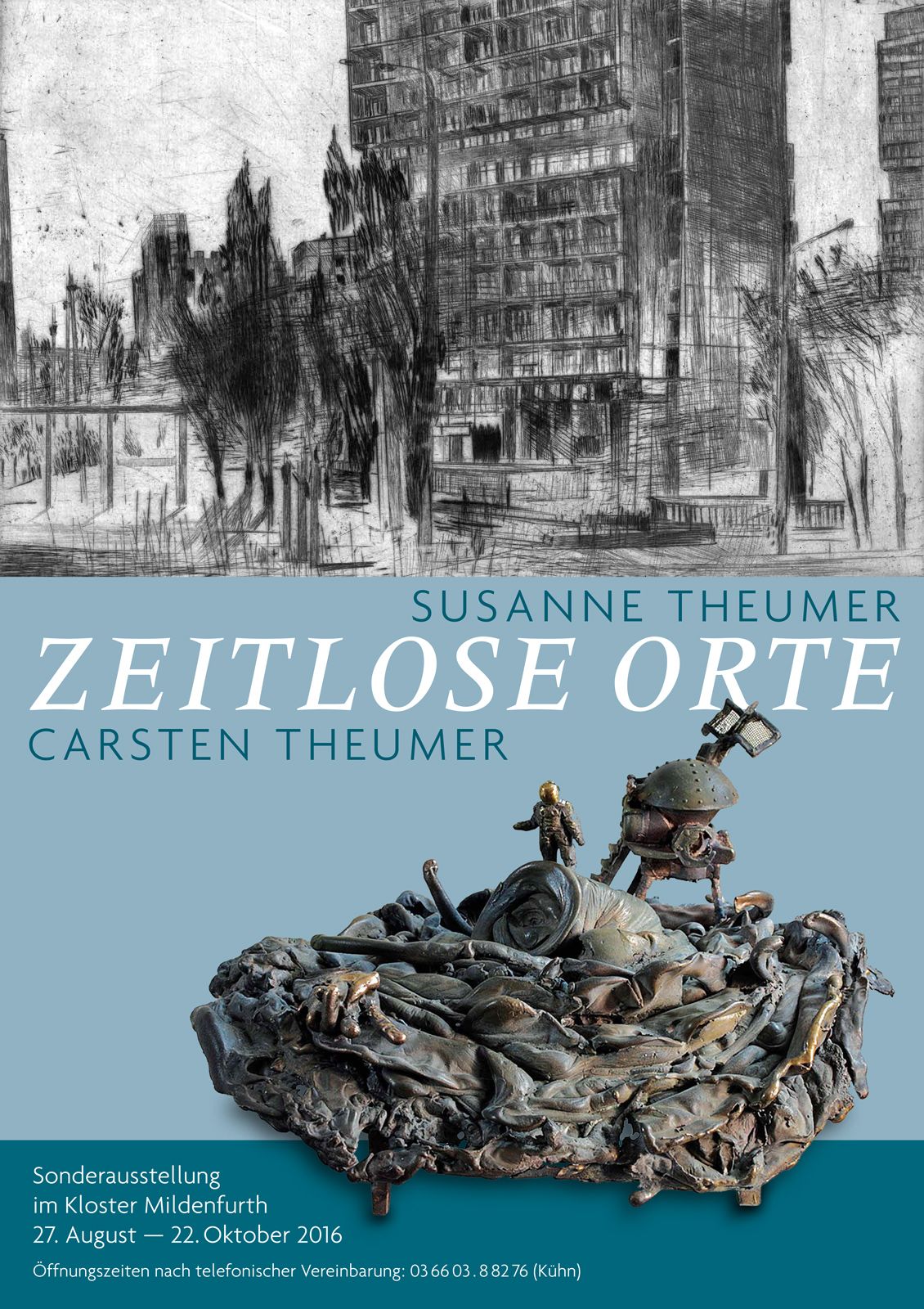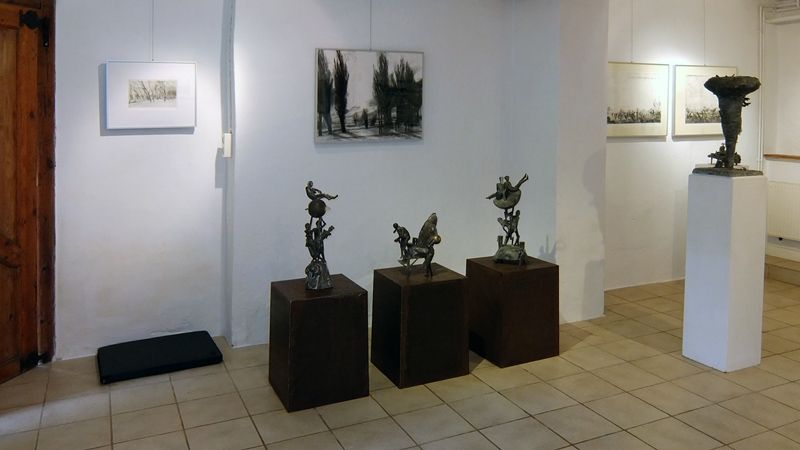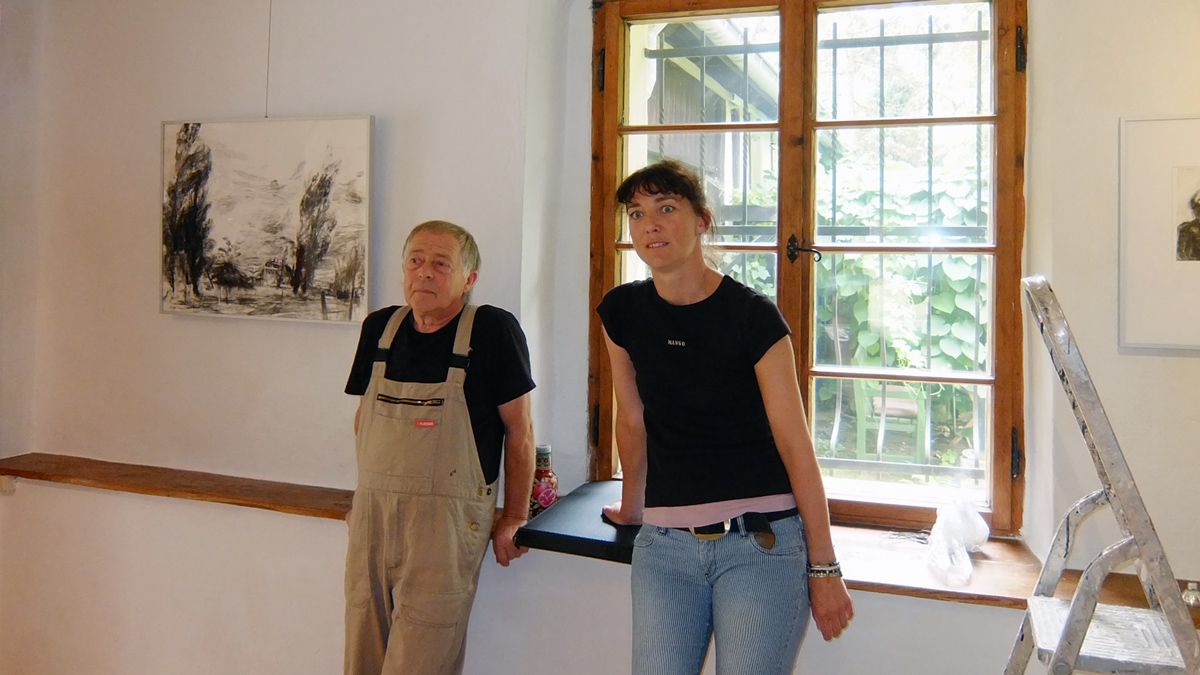text: Carsten Theumer
Letter to a drawer
Yes, you are a drawer!
For as long as I have known you, you have been drawing. I can see you now, sitting in the winding streets of Halle’s historical quarter, in front of rows of crooked houses and the old façades with their many designs. Seated on the pavement, a pad before you with a large-format sheet of paper.
Filling it with charcoal and chalk, with swift, vehement lines, rarely doubting, indifferent to traffic and nosy passers-by, focussed and engrossed in your own cosmos, with what is in front of you – your very own universe for a brief time.
Back then, the façades of the houses in Halle were still all kinds of grey, with lots of loose plaster and exposed stonework. Which was the very thing that made them so graphically appealing to you.
You came from Halle-Neustadt, the new part of town, full of buildings made from prefabricated slabs. Nothing so visibly morbid on display there. At the time, you were still too close to that town, your town; it was all too familiar, and so the unknown, the far-away, were more inspiring destinations for your drawing explorations. But that would change.
Later, as we travelled the world together, I would see you drawing on the floor of the churches of Rome, in the dust of the streets of Syracuse, in the magnificent landscapes of Crete and the Peloponnese. And by the fjords of Norway.
And it wasn’t always a large-format sheet of paper; you always had a sketch book on hand, just as you still do, filling them in droves, now as then, one after the other.
You chose your artistic means at an early age: charcoal, Indian ink, chalk, graphite. – Never paint! ... Thanks to you, I have seen how many different kinds of black there are ... not to mention grey! A wealth of nuance. I almost want to say: a chromaticity of grey!
In parallel, always, and consequently, one printing technique: drypoint. Where you merely exchange your pencil for a pointed piece of iron, drawing on the shimmering mirror of the bronze plate. It always feels like a little miracle to me when I catch a glimpse of your work over your shoulder.
And yet drypoint is merely drawing, as well. No washing, no etching with acid.
None of chemistry’s coincidences for you! Your drawings are always purely that.
Line by line, layer by layer of the hatching, one after the other.
That’s what I could term your credo, on a small scale or a large, always consistent in your work: one thing after the other!
For the most part, you work – in other words, draw – at the heart of nature, in the places you long for. These are now increasingly within your native landscape, the Mansfelder Land and the Saalkreis district, in the plains of the Sweet and Salty Lakes of our home.
You are particularly taken by the trees that shape this landscape: mighty poplars in long rows, dividing and structuring the countryside; after our many travels to the South, they have become our “cypresses of the North”.
And for some of your collectors, they have since become your “trademark”.
It took your leaves for me to notice how different they truly are, not at all as uniform as their Italian sisters.
How they always seem to want to fly with the wind, often blowing from the west, from the nearby Harz mountain range. What magnificent rows they form! You show them in so many different ways.
Some are slender, with dense leaves, pointing to the sky, while others are twisted and torn. Next to them trees that strive towards lofty heights, all loose and bushy, and those that have been split dramatically, their parts seeming to want to get away from one another.
And others in turn are so wide and heavy, almost tragically broad, that one feels they have always wanted to be a very different kind of tree.
No one is like the other, even though they stand in file: each one an individual. And somehow, that is very comforting.
Recently, you began returning to the place where you grew up.
Halle Neustadt – the town of your childhood.
Where you are creating an entire series of etchings for a book of the same name.
These graphics are highly expressive, Halle Neustadt, bathed in light, seen by you afresh, inventing a new reality for this drawing-board city.
Looking at these etchings, it almost seems as if they were snapshots drawn from a cabriolet cruising by, they emit such a sense of lightness.
But as I said before, copper is resistant: line by line, layer by layer.
When you draw nature, you naturally never aim to imitate or repeat the things you find there.
Some think that every Bach fugue just wants to show Christ; similarly, your drawings of nature are always recreations that point beyond the specific and thus take our concept of reality that much further. Perhaps the nature of great art? Perhaps.
And that’s why to me, your bouquets of wild flowers not only show the melancholy of their wilting and passing but the magnificence of their vibrant life as well. If you are aware of the one, you will see the other.
And these pictures thus also contain the memories of the meals we have taken together, of our boys’ laughter, of your laughter. The bouquet in the vase shows a whole life in fast motion, in passing.
And if I were to ask you, did you actually want to draw a lush bouquet of flowers in all its blossomy glory? Well, I’m sure that’s not something you would have considered ... to you, it might be ... something of a half-truth ... or just one half of life?
You etched your most recent graphics onto old copper plates again, creating them as you stood gazing at the landscape of the banks of the Saale outside the city gates of Halle. Wild thickets, timeless places where nature can take back her terrain, undisturbed by humans.
Not far from here, Halle Hafen; nearby the scrapyard where you get your copper plates: the unused leftovers of roofing companies that already have traces etched upon them. Traces you love weaving into your own. Many of them you keep, others you shave off, should they seem unfitting.
Is that how you always create that second dimension in your etchings? That sense of the mysterious that inserts itself between the image and the viewer?
These different dimensions, are they not the very thing that distinguishes true art? Perhaps.
And I usually sense a fine crack that seems to reveal itself to me in your large-format drawings. And a new flower seems to grow out of this imaginary crack, again and again, the notion of a rare plant the world has never seen before. Maybe that’s what keeps my marvel at your drawings from diminishing.
And every day, when I glance into the workshop where you etch, in our home, I find something new and surprising that you have made, day after day.
And that is also something that makes me feel incredibly happy; incredibly lucky.
I have always wanted to tell you that.



